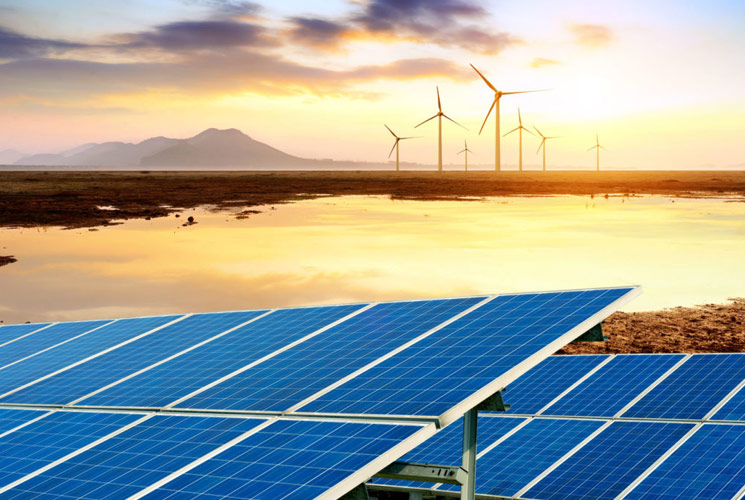By Scott Sklar October 18, 2016

In the last month I have read two commentaries. One is by a traditional utility executive who said “renewable energy cannot be a major grid contributor because it is too intermittent”. The other is by a solar photovoltaics company executive saying he couldn’t see renewable energy displacing fossil fuels because wind blows at night and solar by day, which can’t cover the entire electric generation day. Both these “experts” see the energy world through their very narrow glasses and come to the same misguided conclusions.
The basic misconception is that renewable energy is only limited to solar and wind. In fact .. geothermal, marine energy and freeflow hydropower, sustainable biomass (landfill gas, manures, human sewage, food processing and contaminated grains,etc) – are all 24 hour power. The 32 studies I hand my GWU students show conservatively that geothermal can meet 10% of our electricity with half the resource under the Appalachians. So it not just a west coast resource. Marine and tidal energy along with freeflow hydropower that needs no dams or diversions can conservatively meet another 10%. Building renewables including solar water heating, solar daylighting, solar thermal A/C, and geothermal heat pumps can conservatively meet 12 % of US electricity. Concentrated solar power with storage in the US deserts can conservatively meet 10%, and waste heat and combined heat and power can conservatively meet 8% and waste-based, biodegradable biomass can meet 18% of US electricity. All of these total 68%.
The National Renewable Energy Laboratory has concluded that wind can meet 20% of US energy, and solar photovoltaics according to various studies can meet approximately 15% of US electricity. Both wind and solar can better achieve that goal with energy storage (battery banks, pumped hydro, compressed air and liquids, and hydrogen) which can make these more variable resources dispatchable for the grid, buildings, and infrastructure.
I also wish to point out that words matter. Solar and wind are not intermittent, they are variable. If solar were intermittent, the chance to grow our food would be nearly impossible. But in fact the sun is quite dependable but it’s output varies.
And then there is the last forgotten resource: energy efficiency. The American Council for an Energy-Efficient Economy (ACEEE) has released a new report finding energy efficiency in the United States has come a long way in the last 35 years, slashing in half the “energy intensity” metric that compares energy consumed to the gross domestic product. Last year, the study found, efficiency measures saved the United States $800 billion. Most of the improvements over the last 35 years came from advances in energy efficiency itself, ACEEE concluded, and not changes in the broader economy. If we increase our application of the three major policies examined in this report (appliance and equipment efficiency standards, utility energy efficiency targets of 1.5% per year, and building energy codes), efficiency could become our nation’s largest electricity resource by 2030. [http://bit.ly/2bxrImE]
It is always less expensive to save energy than generate electricity from any resource. We can technically and economically cut our electricity demand by 36 percent.
So we need to look at the complete portfolio of clean energy options, rather than cherry pick what we are most familiar with. The good news is that we have many options. Bloomberg New Energy Finance reports nearly $329 billion of private sector investments in renewable energy in 2015 and REN 21 reports that global energy efficiency investments were $304 billion. [http://www.ren21.net/gsr-online/ chapter06.php]

About the author:
Scott Sklar is President of The Stella Group, Ltd., is an Adjunct Professor at The George Washington University teaching two courses on sustainable energy, and Chairs the Sustainable Energy Coalition in Washington, DC, and can be reached at solarsklar@aol.com.




